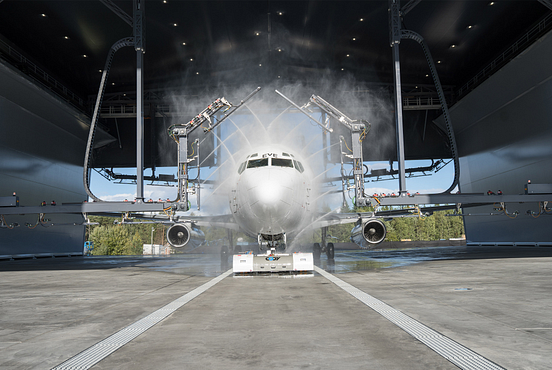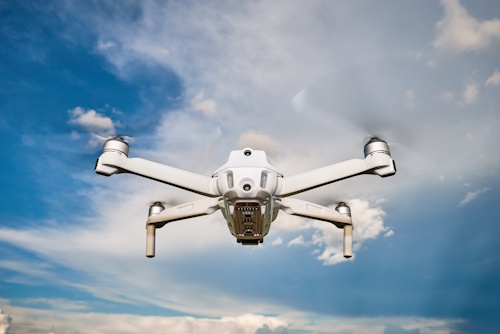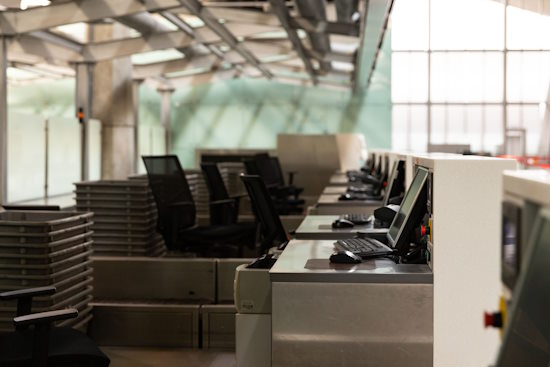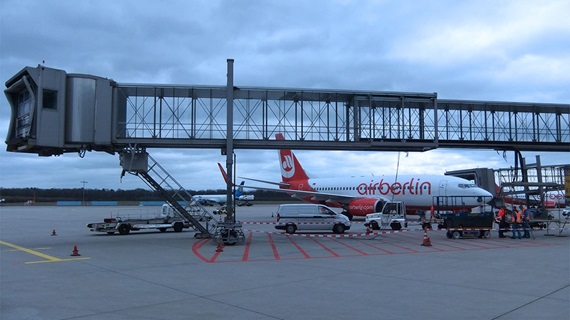How igus® products help de-icing vehicles protect the lives of airline passengers
Frost, ice and snow collecting on critical surfaces of an aircraft can quickly compromise safety. Any amount of buildup impairs an aircraft’s aerodynamics and in the worst case, can cause stalling resulting in a crash. That is why wherever cold temperatures are the norm, special de-icing vehicles are used to remove buildup from the aircraft.
How does de-icing work and what agents are used?
Ice and snow removal from an aircraft is a two-step process. The first step is to clean the fuselage of frozen and semi-frozen contaminates. Type I de-icing fluid, a mixture of a chemical called glycol and water, is heated to 140 degrees Fahrenheit (60 degrees Celsius) then sprayed under pressure onto the surfaces of the aircraft.
The second step is to continue treatment of the aircraft’s surfaces using Type II fluid. The Type II agent has a thicker consistency and is used for anti-icing. The more viscous Type II fluid sticks to the aircraft longer preventing ice and snow from accumulating and will remain on the aircraft until it reaches about 100 knots (115 MPH / 1 85 KPH) during takeoff.
These de-icing and anti-icing fluids are dyed with different colors to help distinguish them more easily; orange for Type I and yellow for Type II. The different colors also make it possible to see which parts of the surface have been covered with the fluids.
What usage options and advantages do igus® products and materials offer for de-icing?
igus® products largely consist of optimized plastics, which are by nature resistant to the effects of water and do not corrode. igus® has also developed special plastics that deal with chemicals especially well. Many tests have revealed resistance to such substances as ethylene, propylene glycol, and Skydrol. These properties make igus® products ideal for use in de-icing vehicles.
The following igus® applications are frequently used on deicing equipment:
- Cables and cable carriers for extendable arms
- Plastic rollers for guiding extendable arms
- PRT slewing ring bearings for rotating the driver’s cab
- Plain bearings and linear guides for adjusting the driver’s cab
- Spherical bearings and plain bearings for front nozzle movement
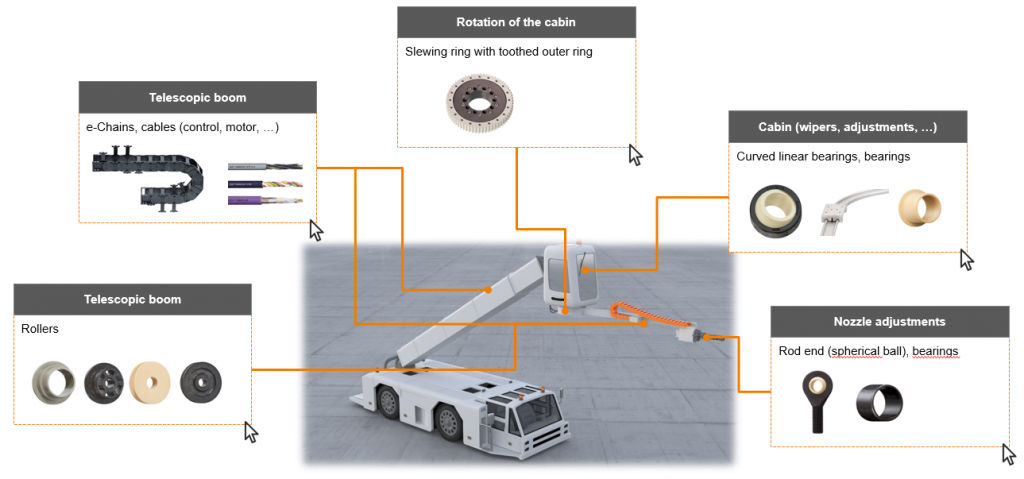
Are there other options for de-icing?
In addition to traditional de-icing vehicles, many airports now employ whole de-icing machines. Aircraft move through huge stationary gantries are much like a car wash. An airplane simply pulls into the structure where they are then sprayed by computer-controlled nozzles, de-icing the aircraft. These systems are most frequently used in very cold regions where aircraft must be de-iced often.
Interested in learning more about engineered plastic components? Contact igus here or call us at (800) 521-2747.

